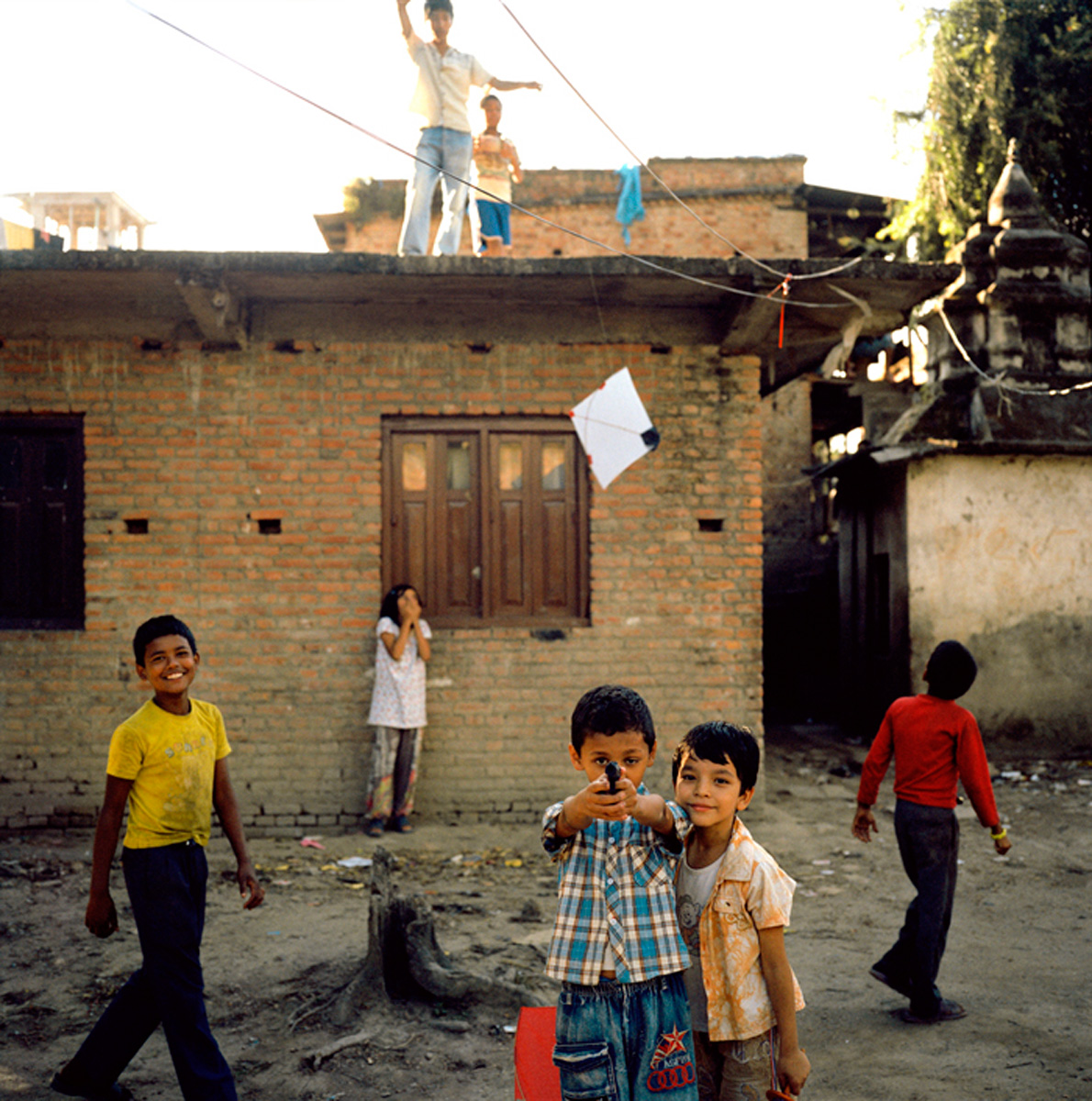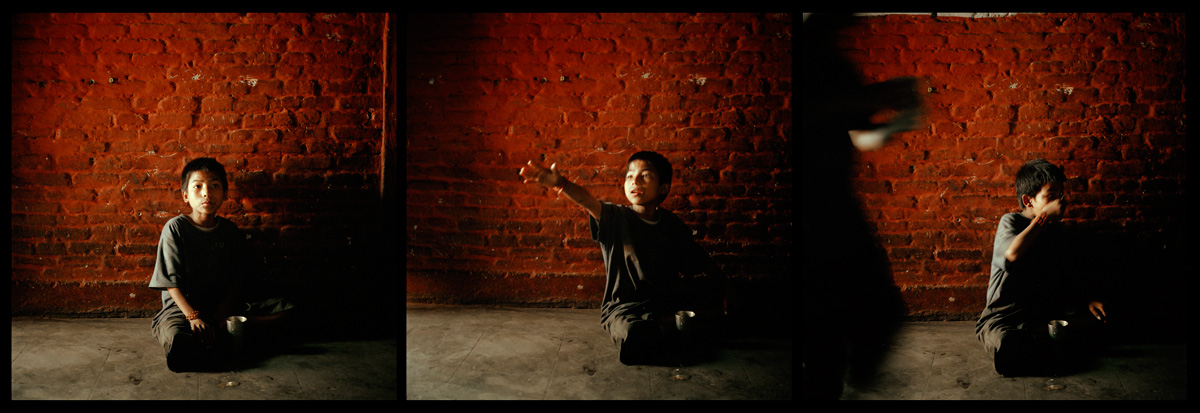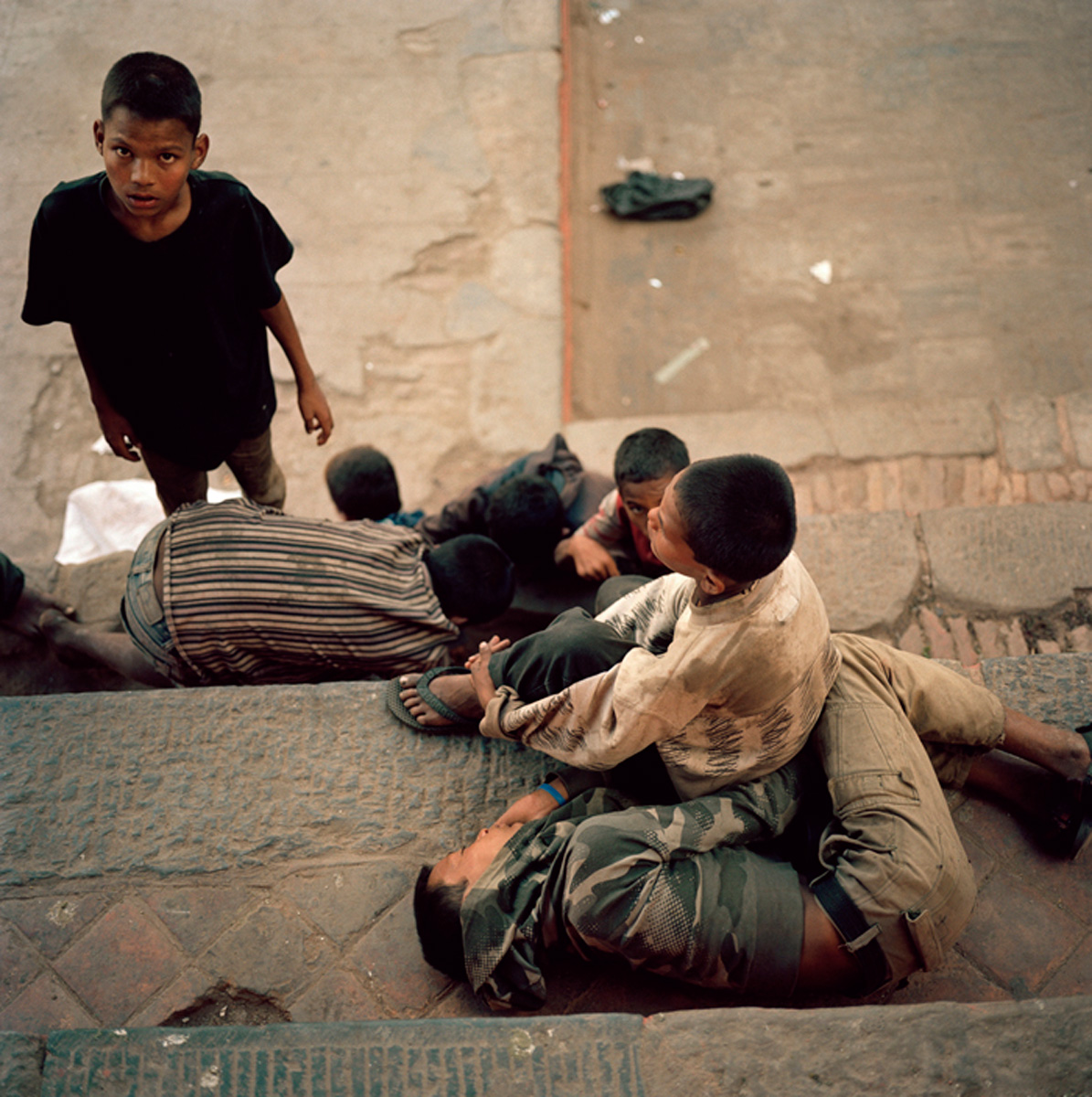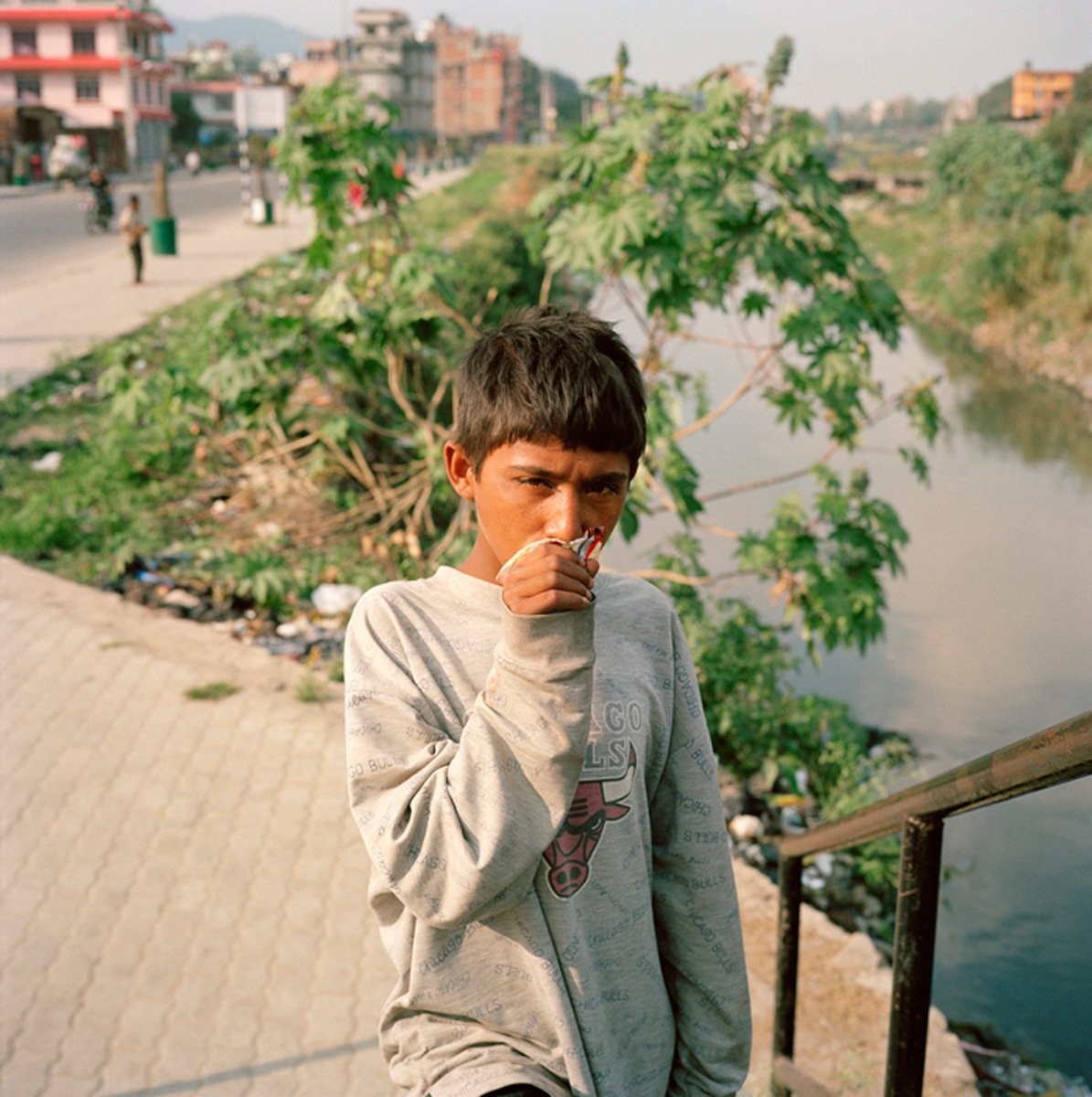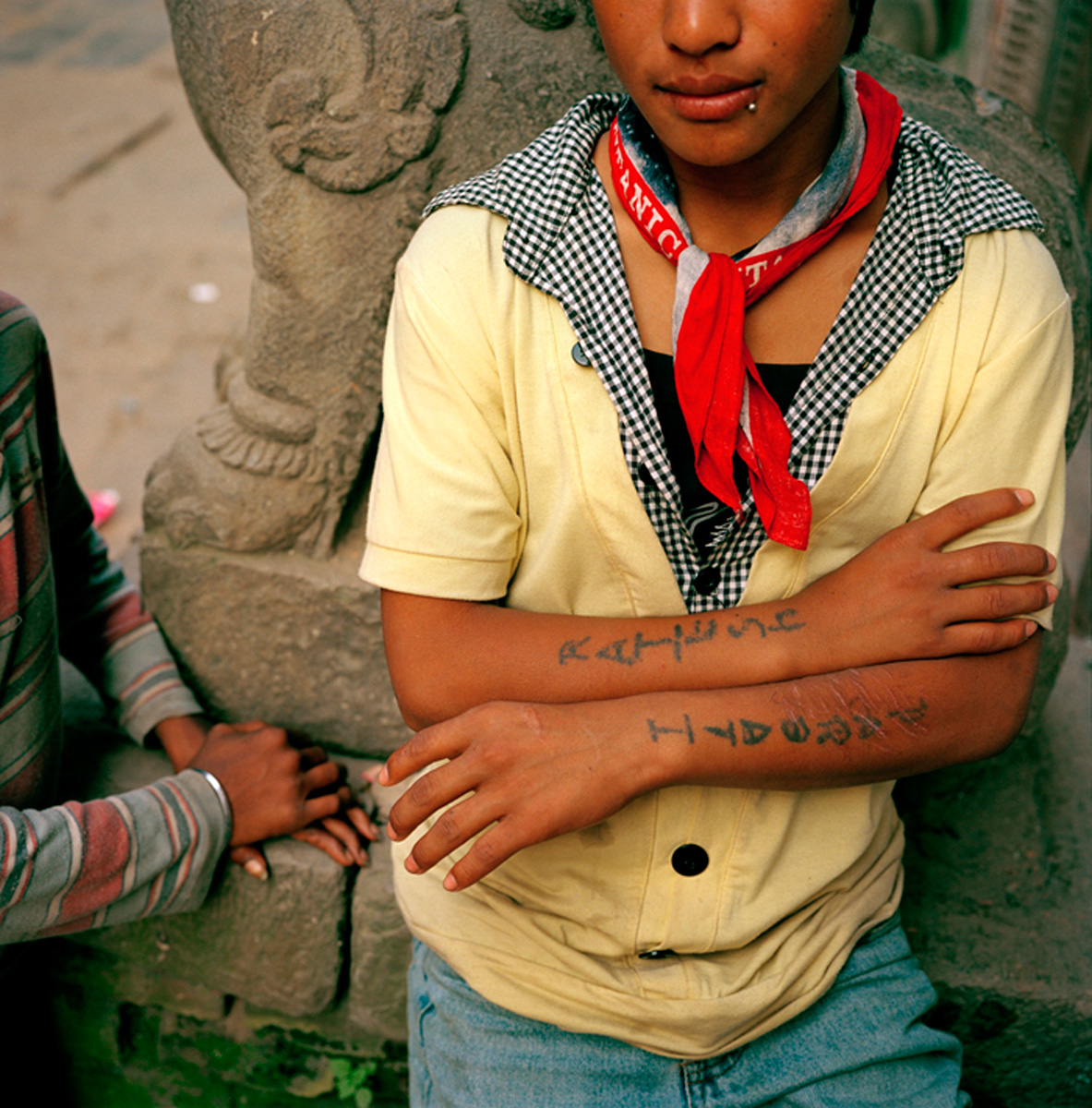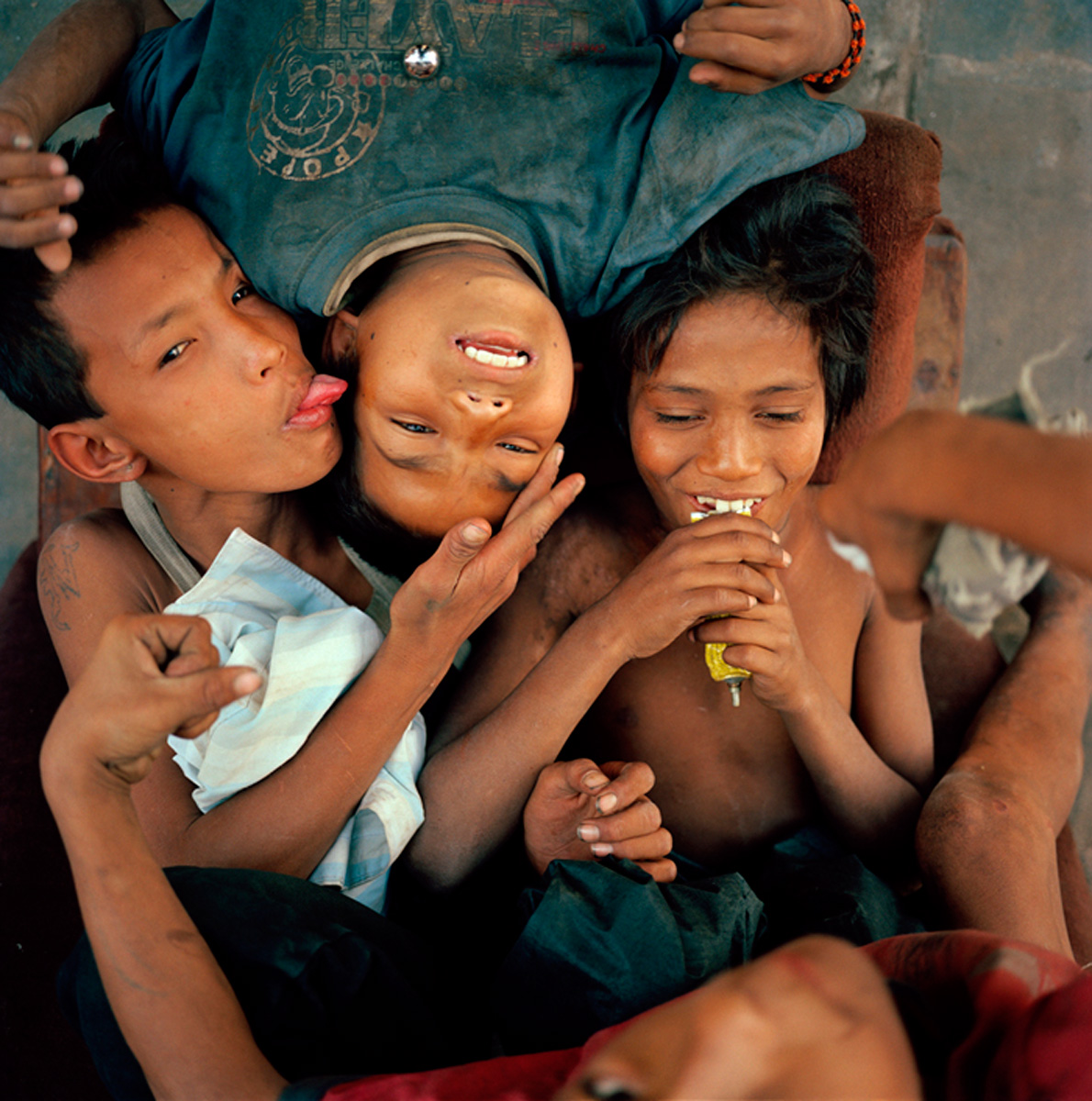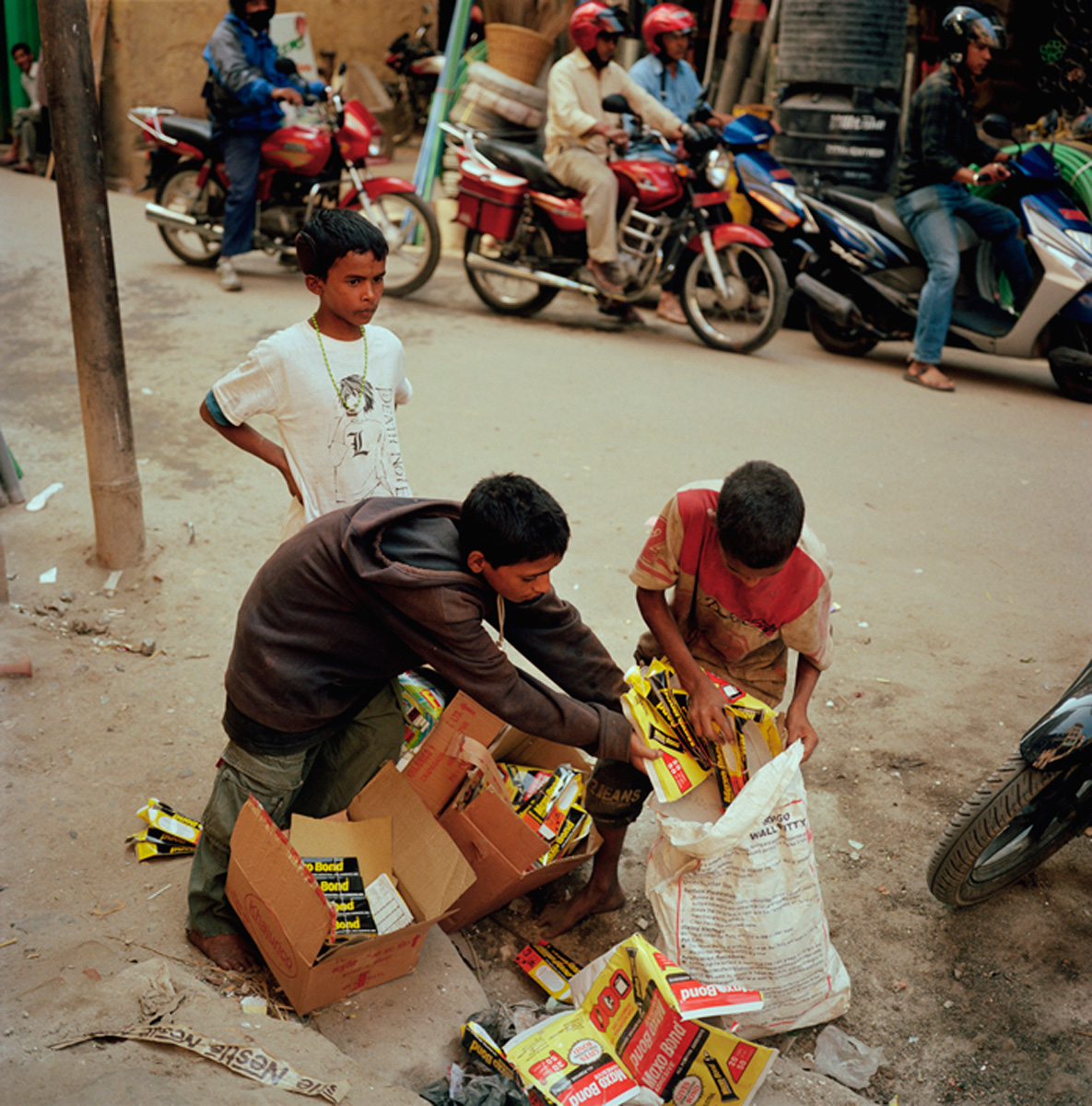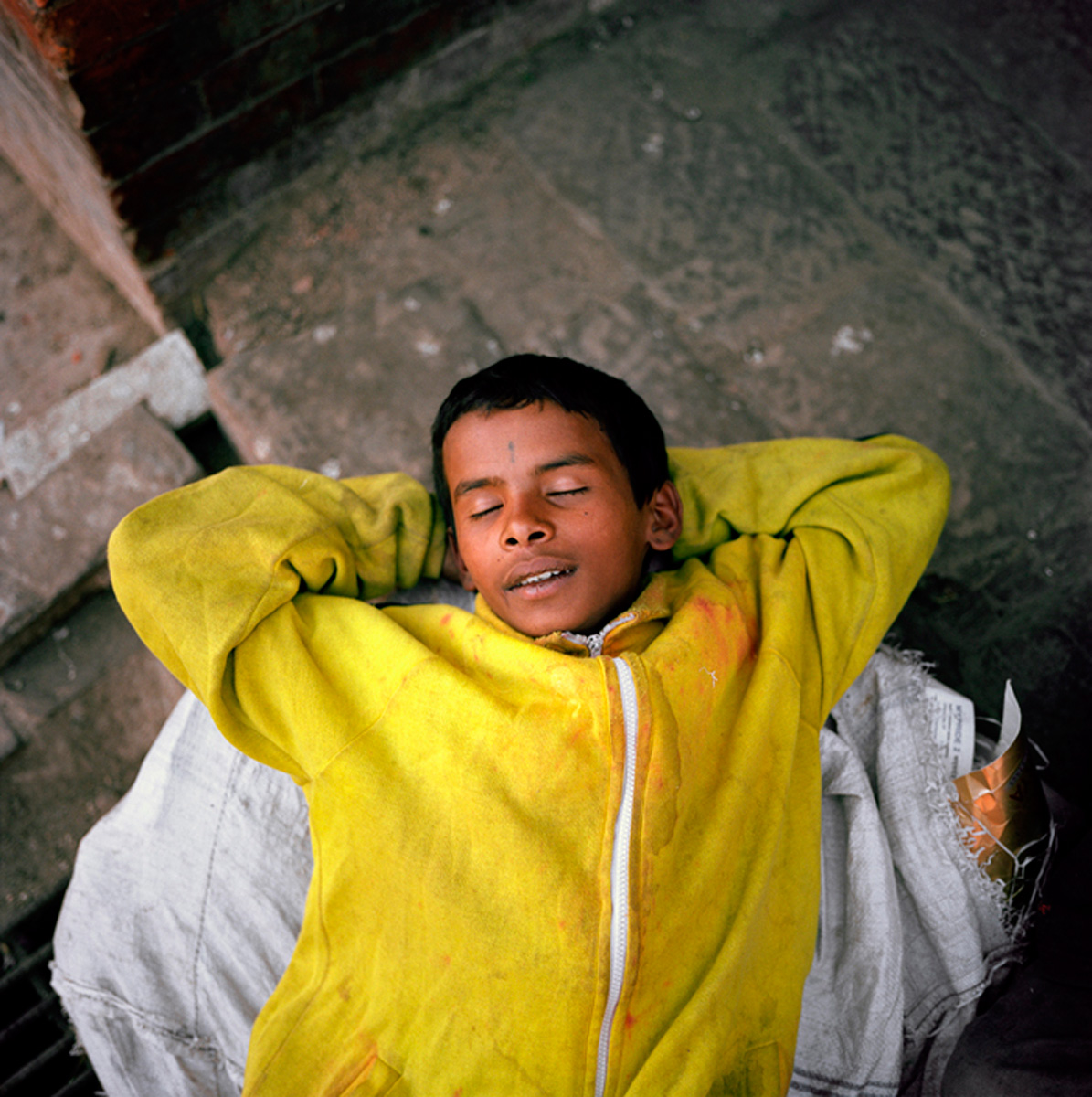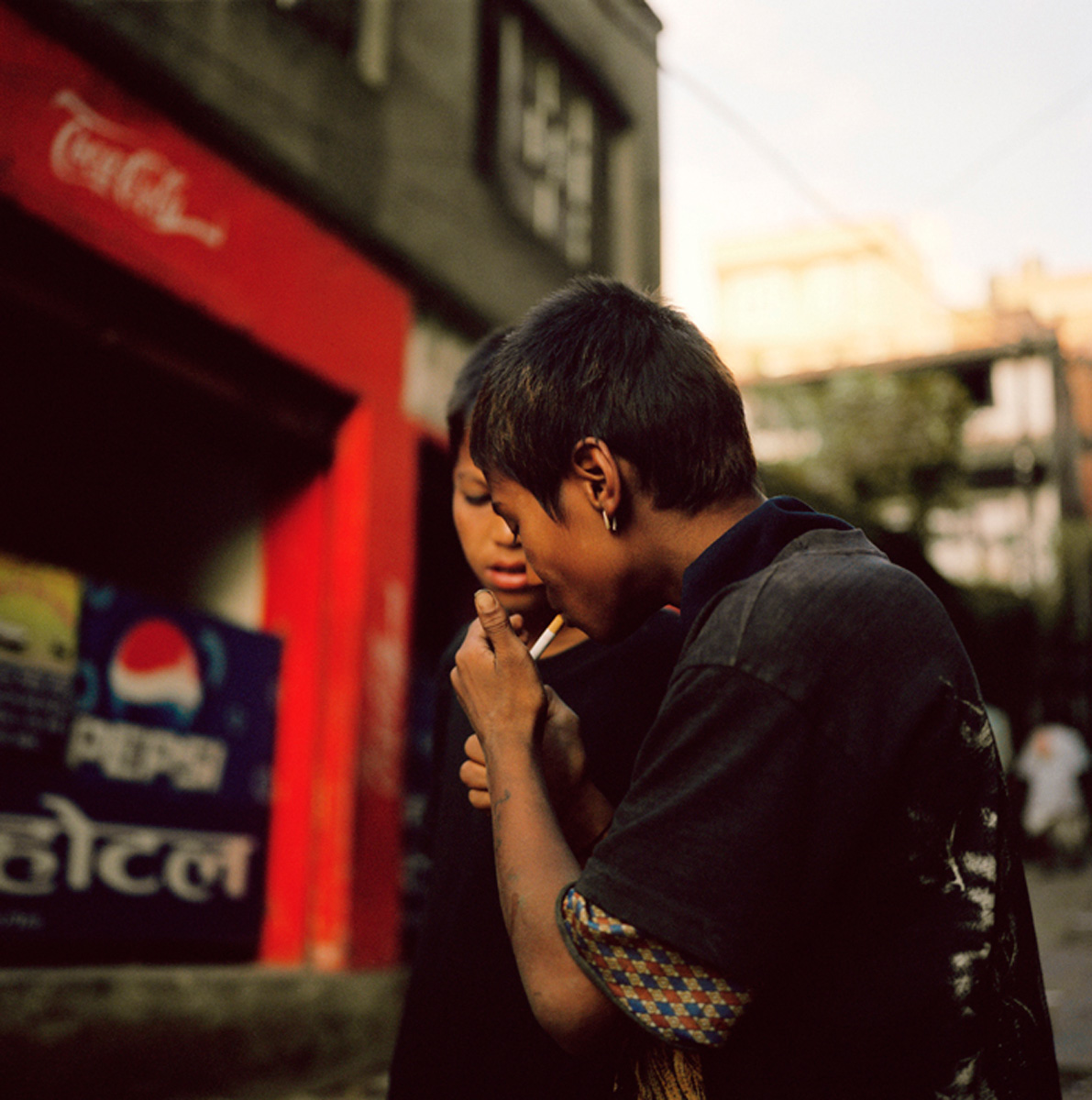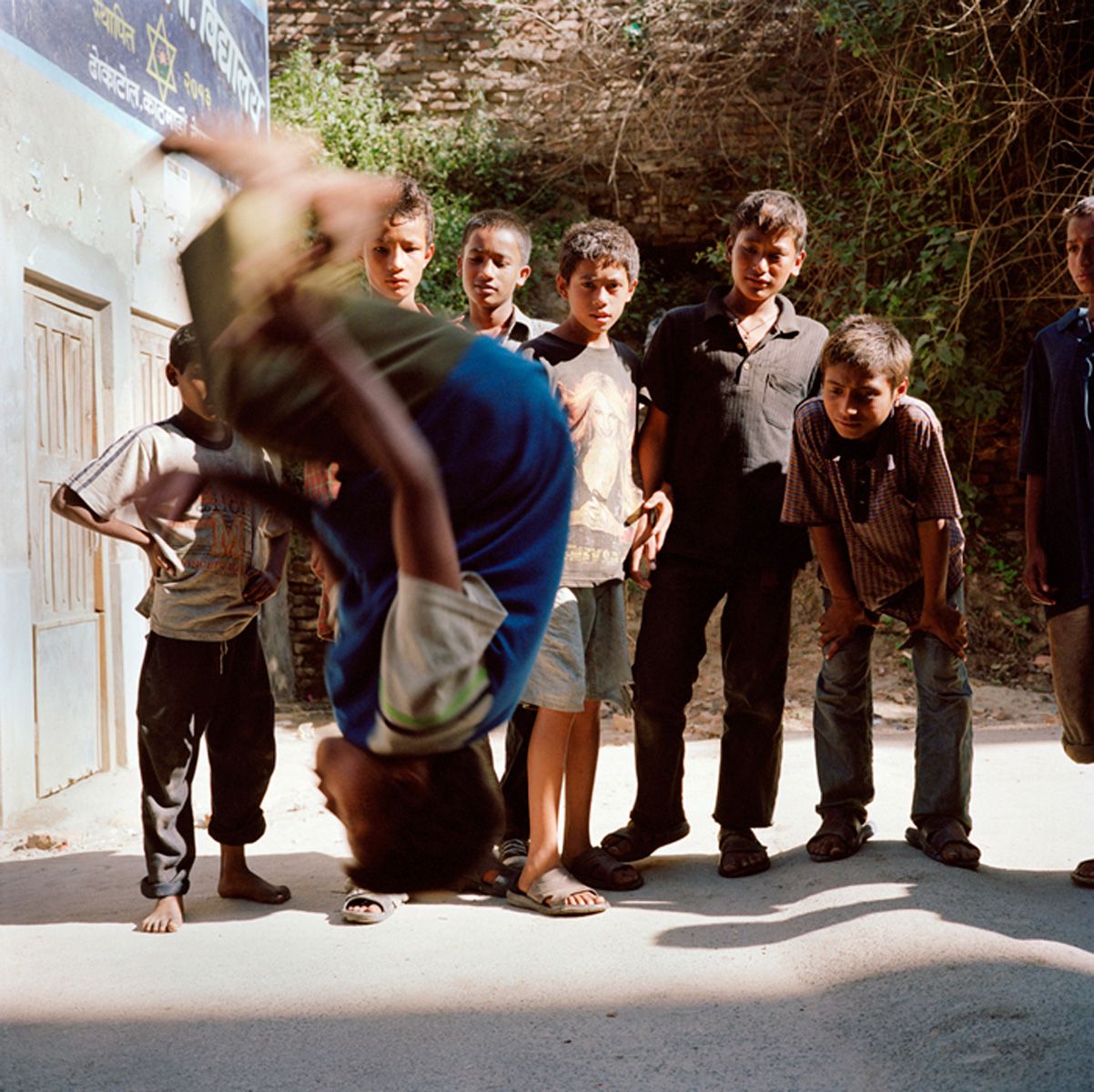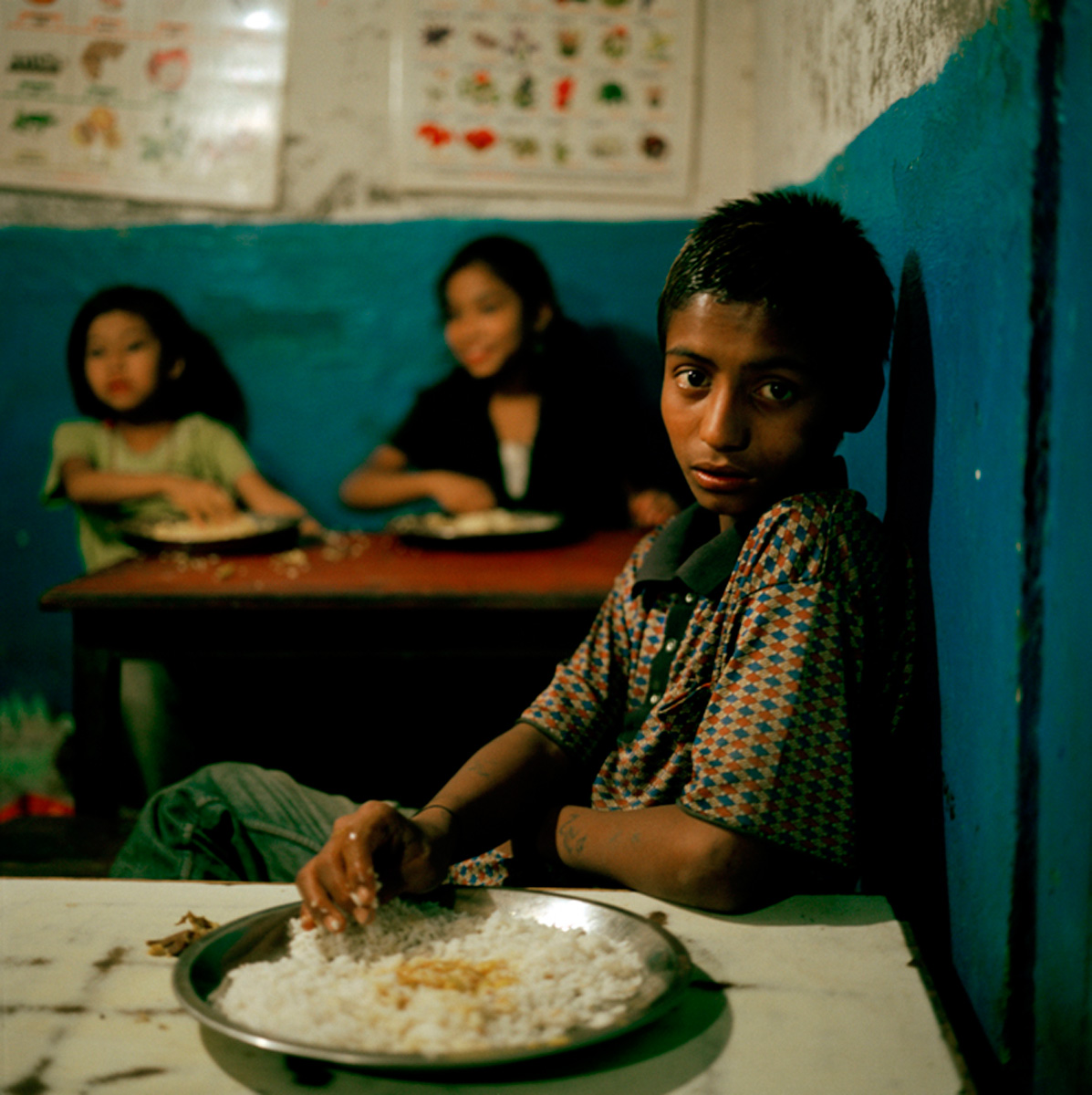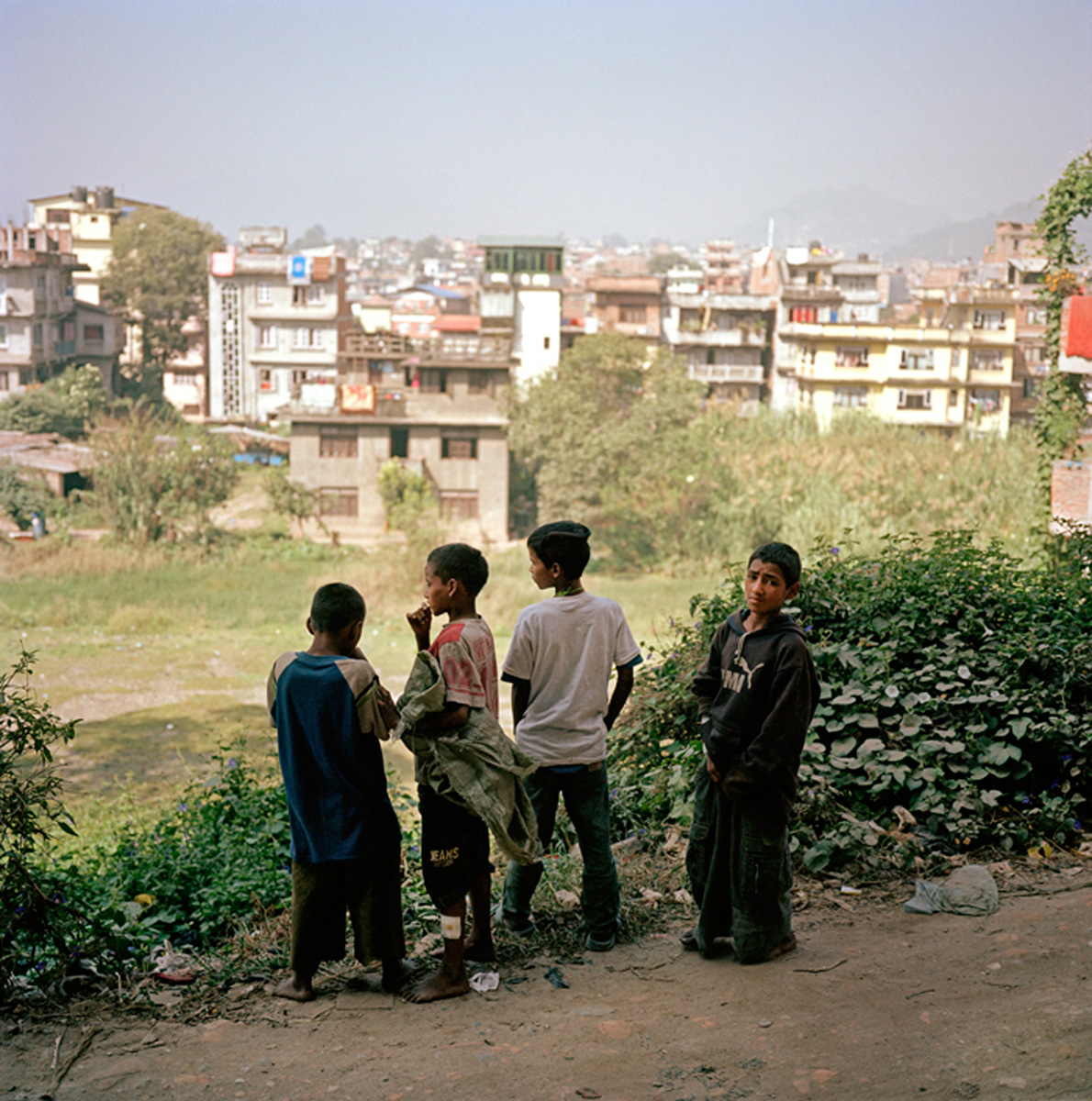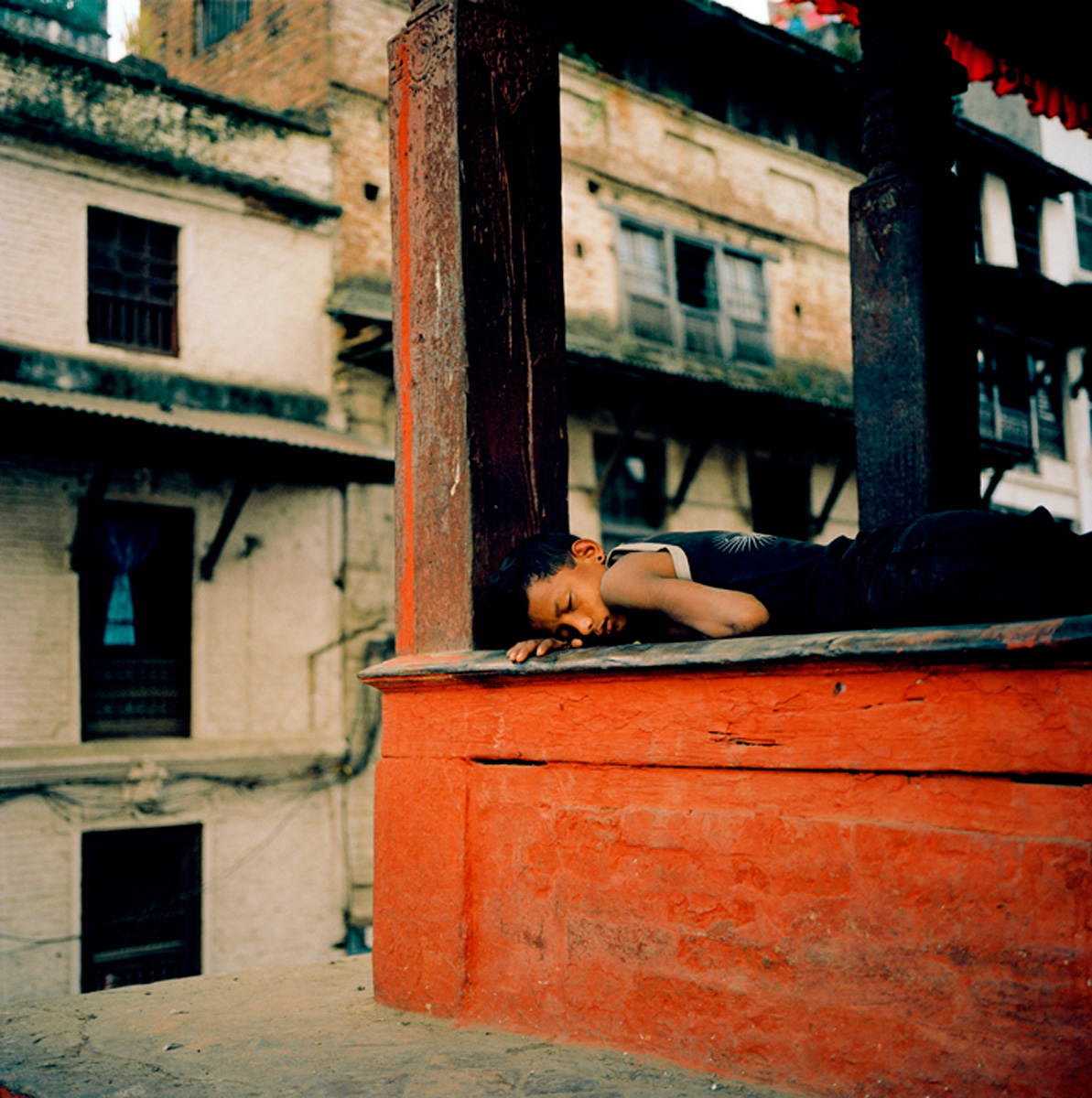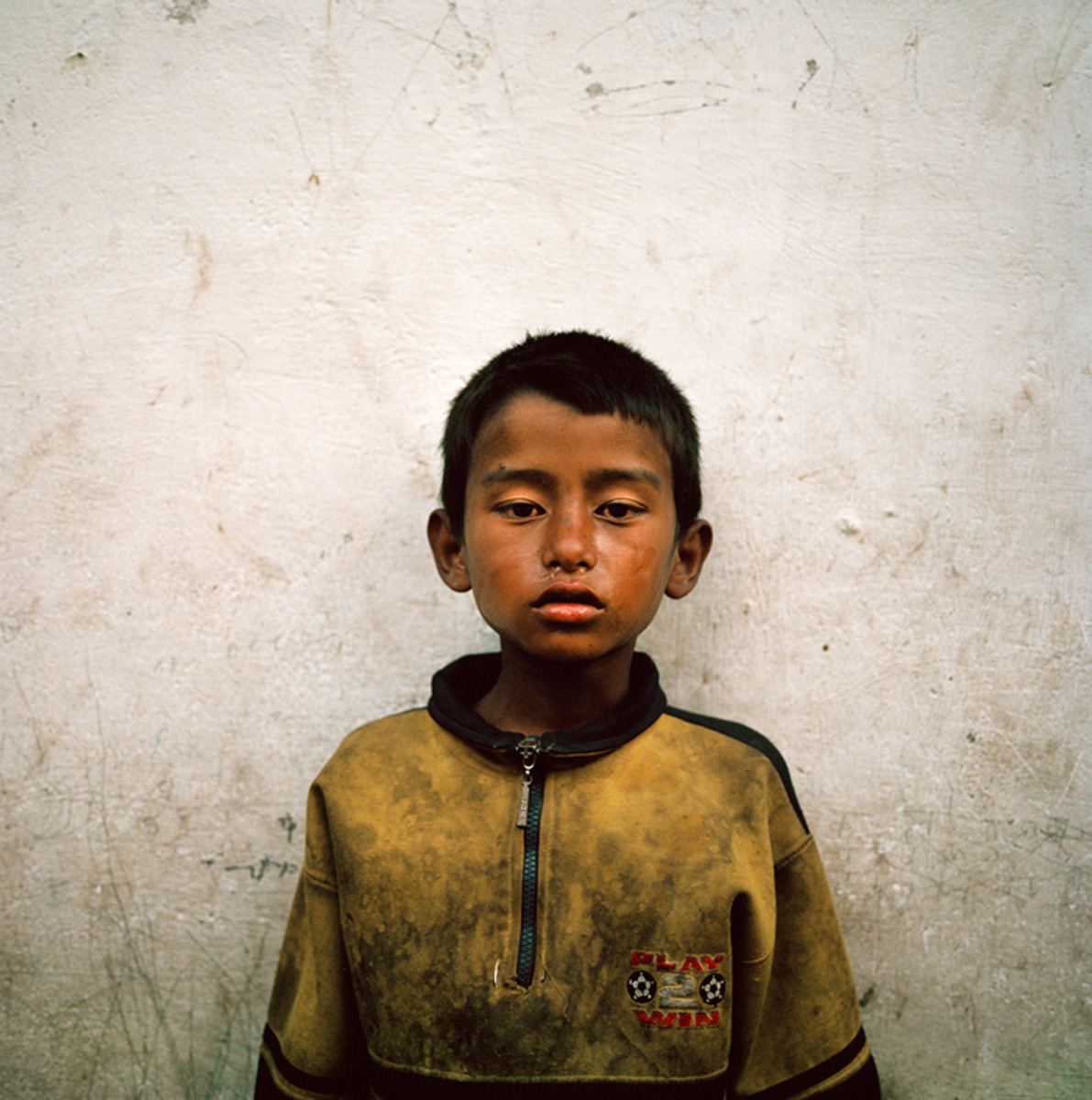The Gang of Kathmandu tells about the daily life of the street children of Kathmandu, Nepal. Those children allowed me to follow them during their peregrinations around the city.
I followed them during the day when they work collecting cardboard in the dirty and busy streets of Kathmandu. I photographed their struggles, their addictions and the poverty that they are facing everyday. But mostly, this is a story of solidarity and brotherhood. The work is my homage to those children and their freedom.
The centre of Kathmandu is a magnificent labyrinth of narrow streets, squares and temples. In this place, called Basantapur, I met for the first time the people of APC Nepal (Association for the protection of the children).Apc Nepal is running several projects; one of those is the Kalimati night shelter. Kalimati is a small place, situated in the very heart of Basantapur, near the beautiful Durbar square. In Kalimati there are two rooms, a toilet, television, carpets and a small kitchen. The door is always open. Night and day. Kalimati is not an orphanage. The children are not forced to stay there; they can come and leave whenever they want. This has been the home for many indomitable kids. The ones who can’t tolerate the strict rules of the institutions come here to spend the night or to eat and to meet other kids. Other Ngo’s criticize the way Kalimati works. They think that this place have been just helping the kids to survive in the street without pushing them to find another way of living. Many of the street children stay in Basantapur. Here are the tourists.They can beg for a few rupees from the tourists and collect cardboard from the many downtown’s shops. Easy money. The children who live in the centre come often to Kalimati. They can rest here, use the toilet, watch television and feel safe. Most of them have no other place where to go. Kalimati has become their home and the people working here are their family. In Kalimati there is only one rule: no glue. Many kids hide their glue tubes around the city before coming here because they know that they will be checked. APC offers to the children also two meals a day, emergency aid and clothes. Most of the children I met and photographed in Kathmandu are regular haunters of Kalimati. [Official Website]



